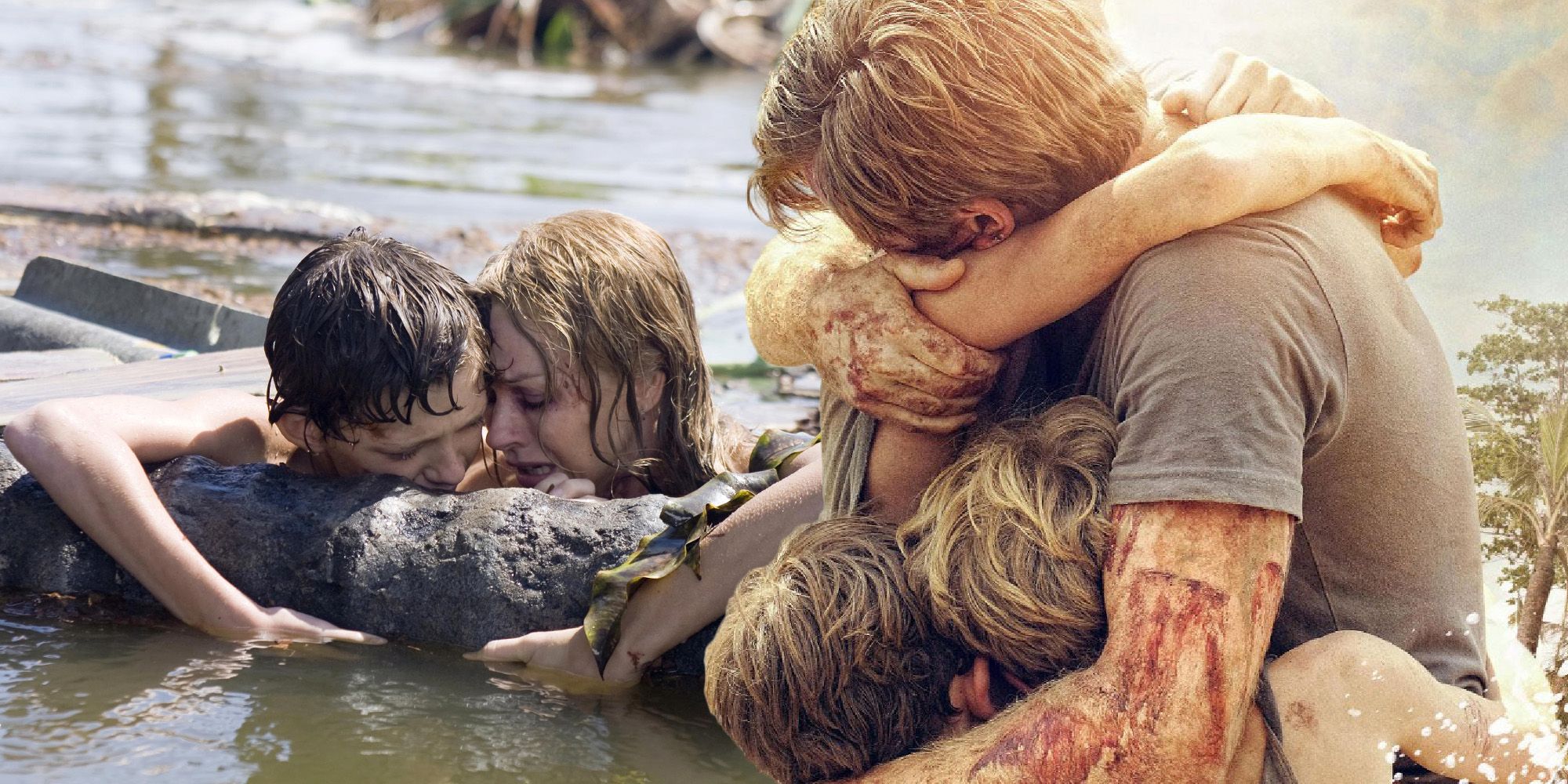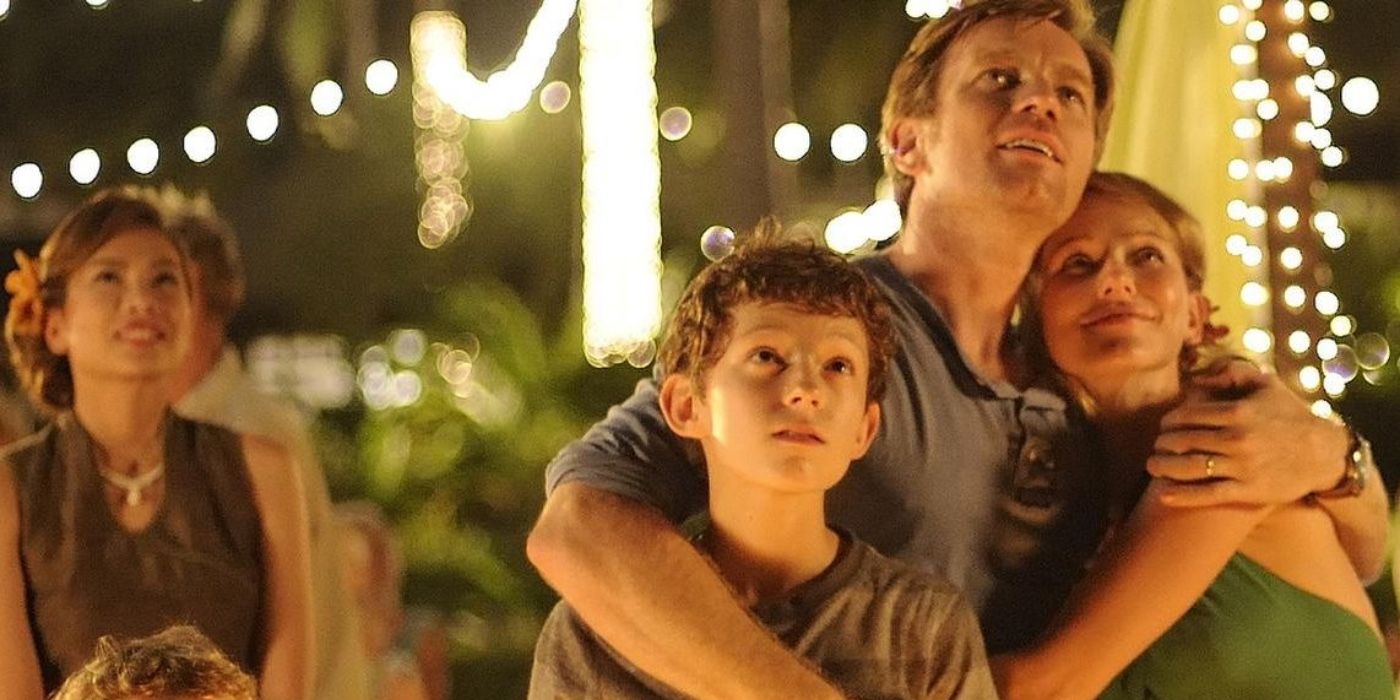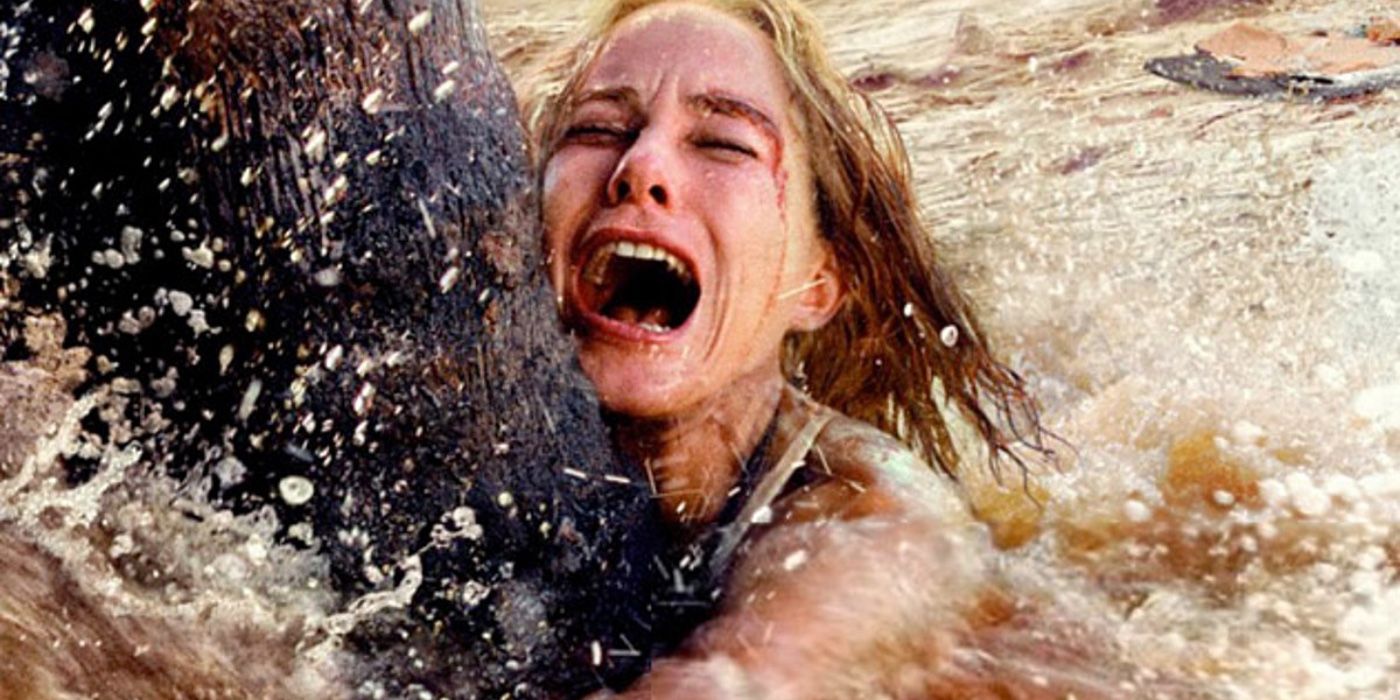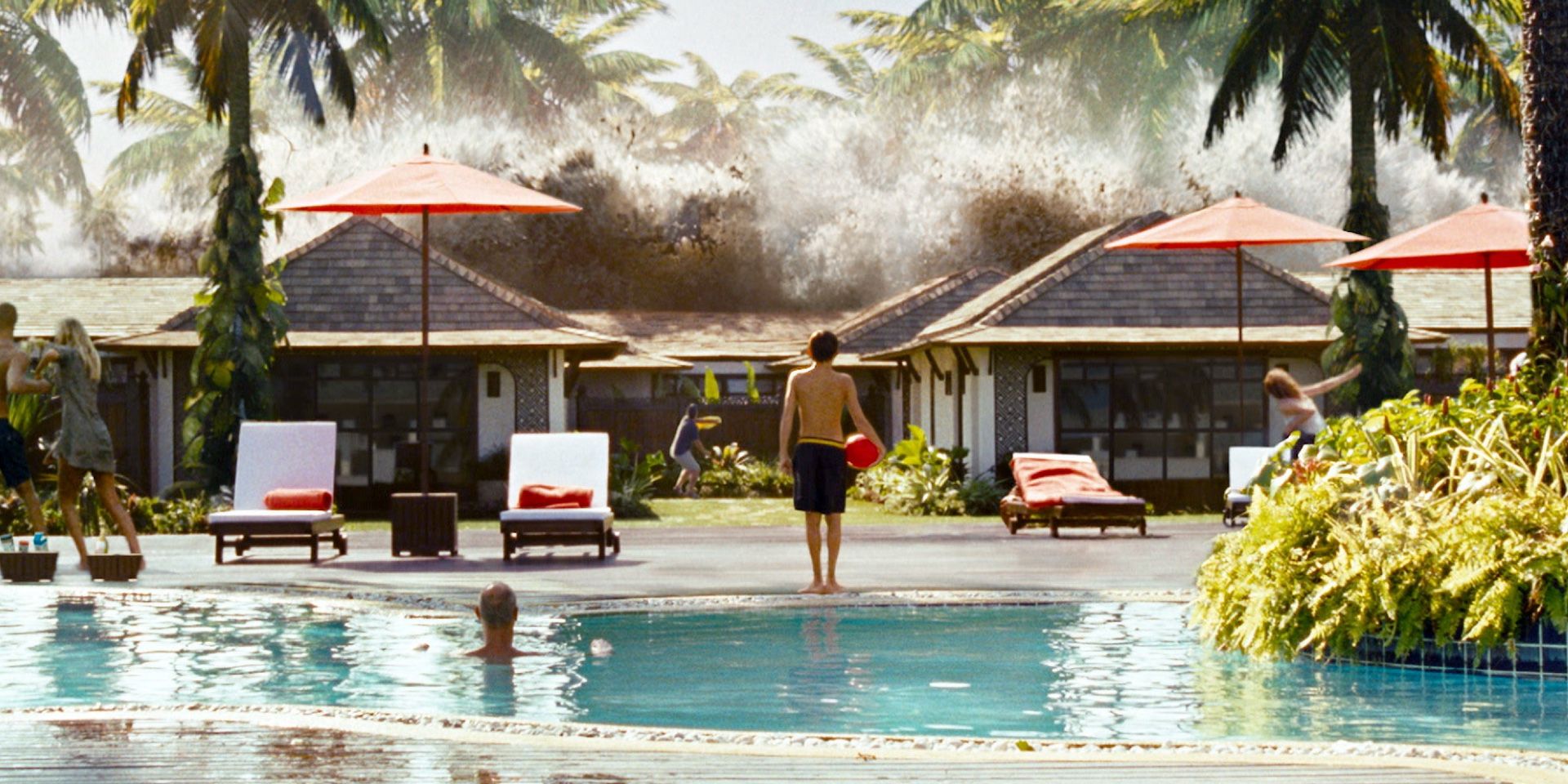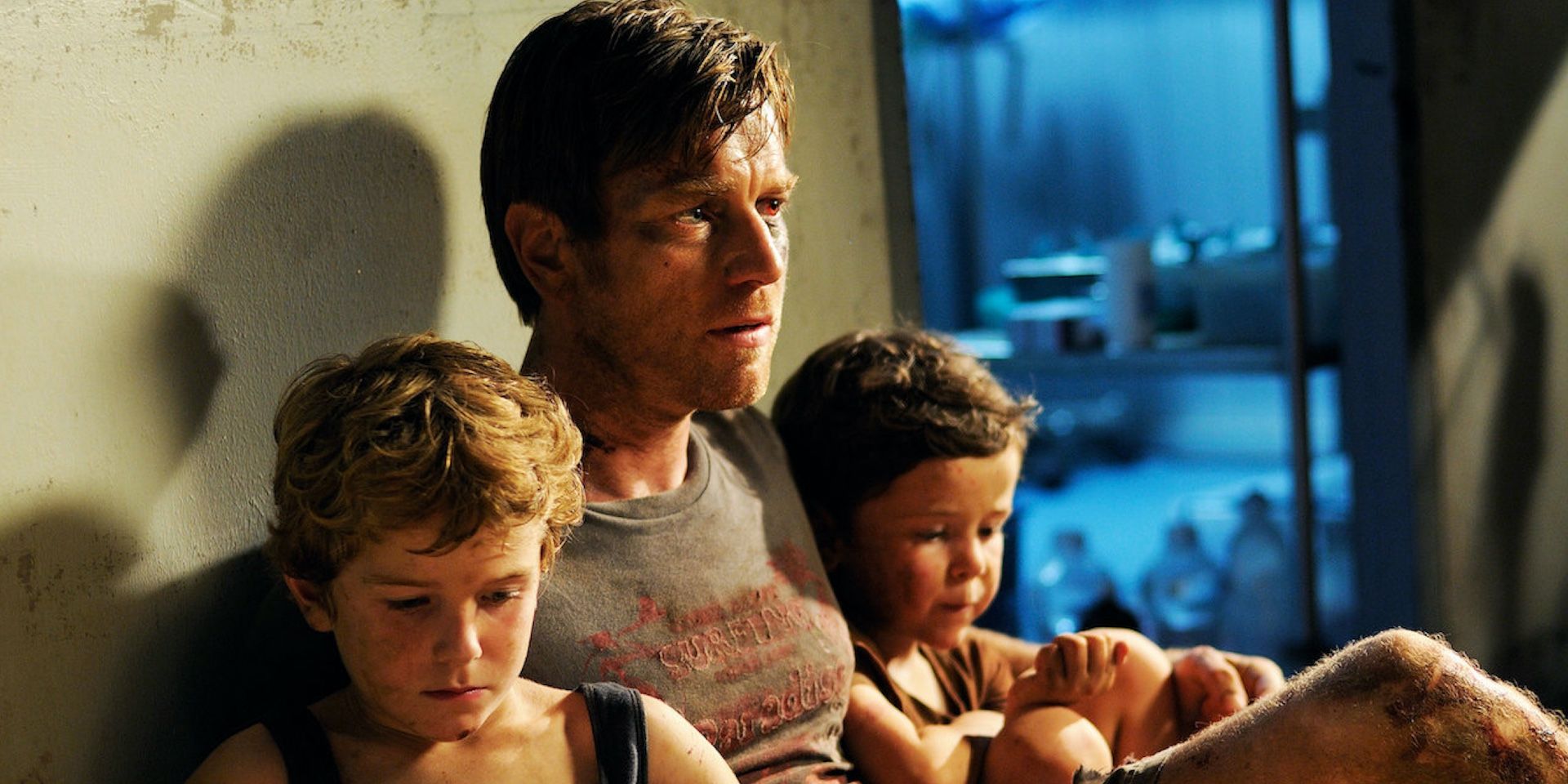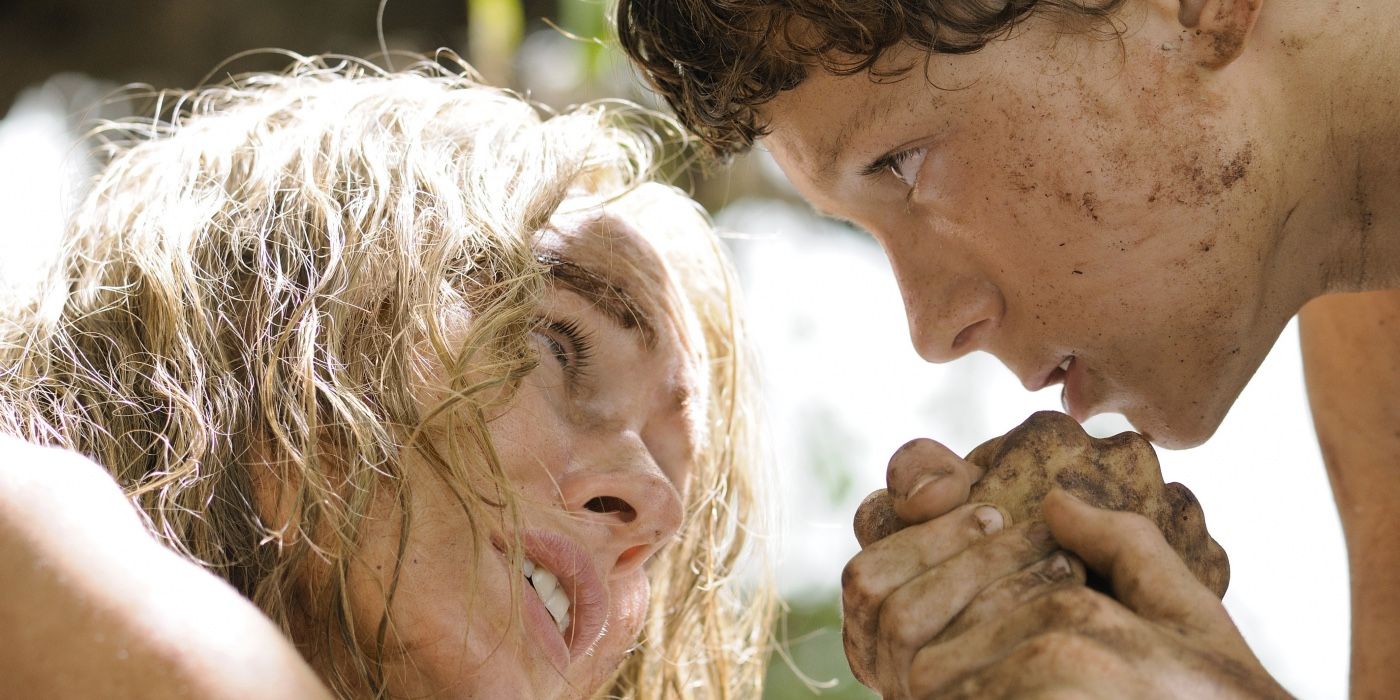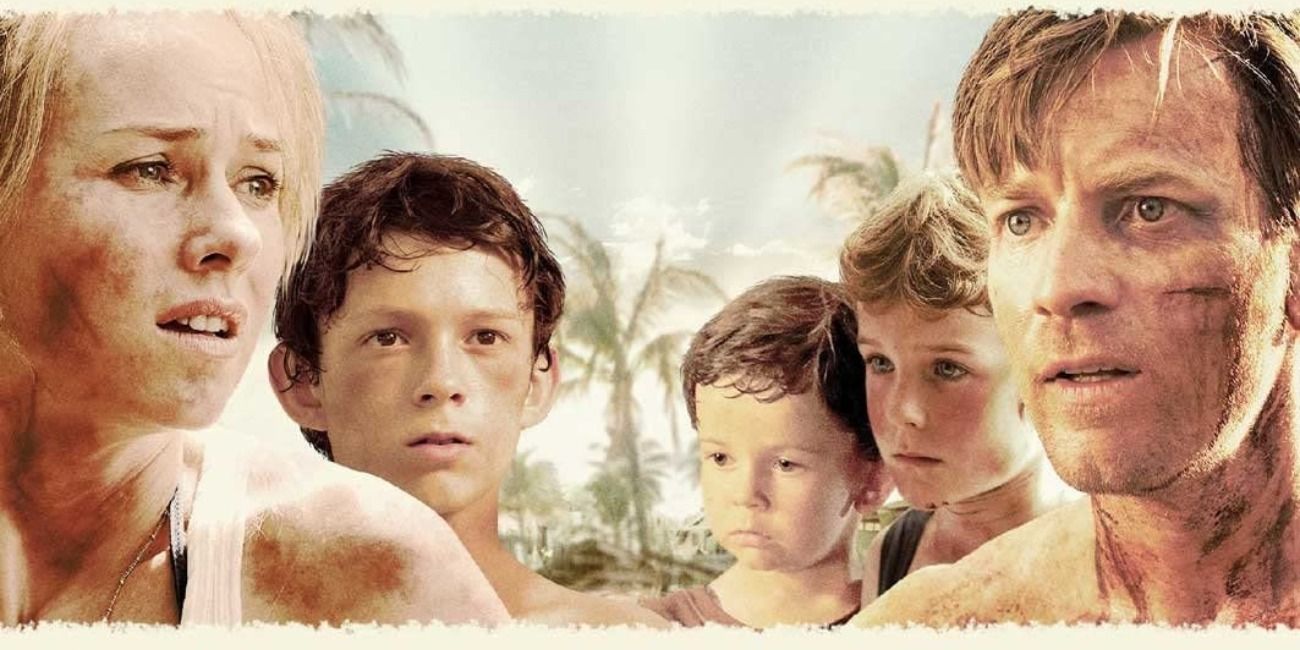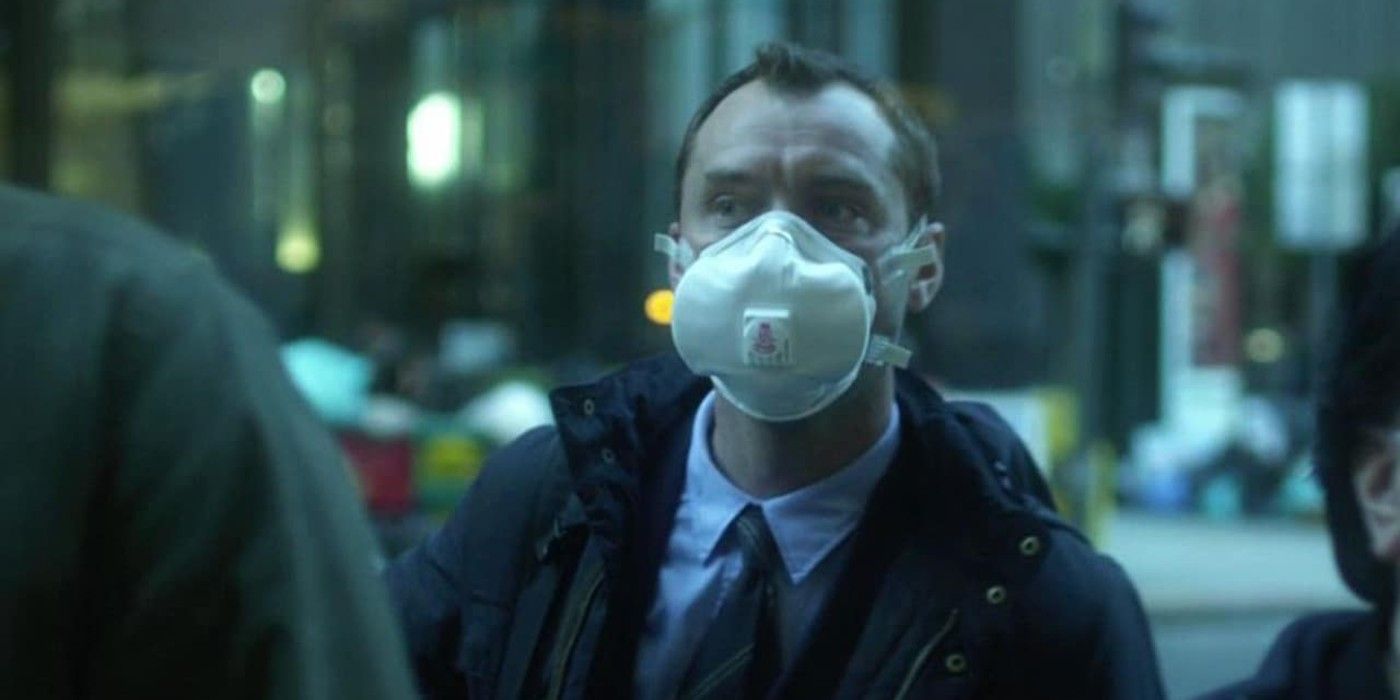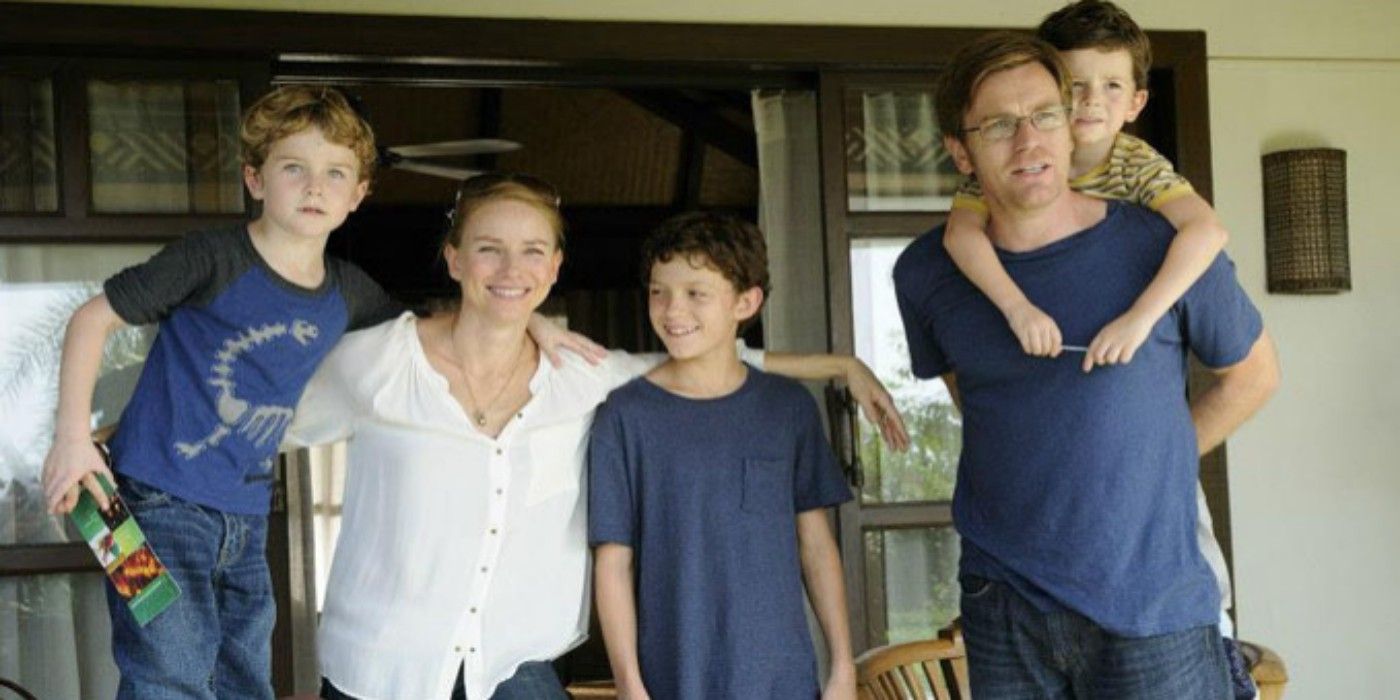Summary
- "The Impossible" is an emotionally resonant film based on the incredible true story of a family's survival in the 2004 tsunami in Thailand.
- The movie makes some changes to the real family's story, such as altering their names and nationalities, to reach a wider audience.
- The film has received praise for its accuracy from other survivors of the tsunami, and the real family continues to use their experience to help others today.
The Impossible true story is an incredible tale of one family's survival in the 2004 tsunami in Thailand. Spanish filmmaker J. A. Bayona directed the movie, which resulted in one Academy Award nomination and a box office performance that quadrupled the $45 million budget. The Impossible features Tom Holland in his debut live-action movie role and includes terrifying survival sequences, but it is the heart of the movie that makes it so emotionally resonant. The story of The Impossible real family inspired the amazing story while the movie also took some liberties with certain aspects.
In The Impossible, the Bennett family travels from Japan to Khao Lak, Thailand for a Christmas trip. Henry (Ewan McGregor) informs his wife Maria (Naomi Watts) that he may lose his job, but rather than worrying about what might happen, the couple decides to relax and enjoy the experience while spending quality time with their children: Lucas (Holland), Thomas (Samuel Joslin), and Simon (Oaklee Pendergast). Unfortunately for The Impossible real family and everyone else in the area, an earthquake and tsunami devastated the community one day after arriving in Thailand.
How The Impossible Changes The Main Family
The Impossible was inspired by the real story of María Belón, who survived the 2004 Indian Ocean earthquake and tsunami in Khao Lak, Thailand with her husband Enrique and three kids (Lucas, Simón, and Tomás). For the Tom Holland-starring movie, the real María reportedly worked directly with screenwriter Sergio G. Sánchez to ensure the storyline's authenticity. Overall, The Impossible stays true to the original story, with The Impossible real family, the Belóns, becoming the Bennetts for the film. María's first name stays the same, albeit without the diacritical mark, and Enrique's name was changed to Henry.
Sánchez has noted that the nationality of the Bennett family is never divulged in the movie because he wanted the story to have universal appeal. With two international stars in the lead roles for the true story-based survival movie, producers were able to market The Impossible as a Hollywood production. Rather than making a Spanish film about a The Impossible real family, Bayona and María agreed that character specifics, such as the nationality of the main characters, could be tweaked in order to reach a larger audience.
The Impossible's Whitewashing Criticisms Explained
When The Impossible true story was compared to the movie upon its release several outlets called out the film for "whitewashing." Many reviews expressed distress that several white performers were cast for the roles instead of Spanish performers who could more authentically portray The Impossible real family, the Belóns. A January 2013 article in The Guardian states that The Impossible "concentrates not on the plight of the indigenous victims but on the less harrowing experiences of privileged white visitors." One month prior, two Slate journalists debated whether or not The Impossible is "reprehensible." And before The Impossible was even released, Film School Rejects commented on perceived whitewashing (like that of Gal Gadot's Cleopatra) showcased in the movie's trailer.
In reality, María Belón hand-picked Naomi Watts to portray her as The Impossible real family matriarch. She very well could have picked a well-known Spanish actor with a mainstream appeal like Penélope Cruz, but instead chose the actor that made an impression upon her while viewing 21 Grams. In this sense, the real María chose the actor whose talents she felt could best fulfill the needs of such a harrowing role, rather than choosing based on accurate nationality. Considering Watts was nominated for an Oscar for her performance in The Impossible, it would seem that María Belón chose the right actor for her role.
While those involved in the making of the film may not see a problem with casting white actors as The Impossible real family, it is true that Hollywood's film industry has the unfortunate tendency to place the projected success of a movie on the popularity of an actor, how they look, and how likely audiences are to see a film with unknown actors in lead roles. While the whitewashing accusations are certainly valid, the cast itself isn't exclusively white, but rather comprised of various Thai individuals. In December 2012, McGregor addressed the whitewashing controversy [via The Guardian] and summed up the spirit of the film:
"Naomi's character is saved by a Thai man, and taken to safety in a Thai village where the Thai women dress her … In the hospital they're all Thai nurses and Thai doctors – you see nothing but Thai people saving lives and helping."
The Tsunami In The Impossible Vs. Real-Life
The Impossible was filmed at the Orchid Beach resort in Thailand, the same place where The Impossible real family stayed when the tsunami hit. For the wave scene, Watts and Holland spent time in a Spanish water tank and special effects were later added digitally. According to María (via the Los Angeles Times), her family visited the set of The Impossible to provide accurate, real-life-based tragedy inspiration for the movie based on their own individual experiences of the tsunami disaster. In the movie, the cast members even stand in the exact same spots where the Belón family members had been. Per María:
“I could almost feel all the souls there. It was raining and raining and raining during the whole shoot. And it shouldn’t be raining... It was the dry season. Bayona would say, ‘Maria, what is going on?’ I would say, 'They need to cry. Let them.'"
When the tsunami consumed the resort, María broke her nose, tore up her leg, and experienced bleeding in her kidneys, bladder, and intestines, which is consistent with what Naomi Watts' main character endures in The Impossible. In October 2020, María appeared in a motivational video for BCC Speakers [via YouTube], explaining that the underwater scenes in The Impossible were designed to make all viewers feel exactly what the victims were feeling during the tsunami.
The Impossible's Hospital Scenes & Family Reunion Vs. Real-Life
According to María, she wrote letters to The Impossible filmmakers that conveyed her experiences while in the hospital. The imagery was then applied to the movie's production. In a letter called “Delirium,” María recalls her feelings while losing a significant amount of blood:
"[The doctors] cut a piece of leg. I felt the tug. Can they throw it to the ocean. He is hungry. Very hungry. That’s why he bit all of us…"
The Impossible real family reunion scene is especially moving, as Naomi Watts' character wonders upon seeing her family after the disaster if she might actually be dead. As it turns out, this particular moment in the movie was also based on the real story, outlined in one of María's letters to Bayona and company:
“They say my name softly. Yell it louder. I’m already walking towards the tunnel. .... ‘Mama, mama, wake up. Did you get on the same wave as I did?’ Simon is covered in mud. Tomas with his chubby cheeks and tear-streaked face is at his side. He has scratches and blood. He is very sad and very serious. ‘Ma, aren’t you happy to see us?’”
The Impossible Has Been Praised For Its Accuracy By Other Survivors
The Impossible has been publicly praised by several survivors; a testament to María Belón's guidance, attention to detail, and dedication to remaining accurate to The Impossible real family. In 2013, Simon Jenkins, a man from Portsmouth who was present in Thailand at the time of the real-life disaster that inspired the movie, stated [via The Guardian] that he was "frustrated" by the accusation of whitewashing, most notably the suggestion that the film was centered on "privileged white visitors." According to Jenkins, the awe-inspiring natural disaster movie The Impossible mirrors his own experiences in Thailand:
"Both for my (then) 16-year-old self and the Belón family, it was the Thai people who waded through the settled water after the first wave had struck to help individuals and families... The Thai people had just lost everything – homes, businesses, families – yet their instinct was to help the tourists."
Survivor Rick Von Feldt also expressed his appreciation for The Impossible in 2013, stating that the Ewan McGregor-starring movie includes details that he and a fellow survivor named Peter had forgotten. Von Feldt also commends The Impossible for capturing all the dangerous items that swirled around in the water after the tsunami hit. He recalls being trapped in a "washing machine of deadly debris."
María Belón has suggested that the message of the film will hopefully stand out the most: “I thought, ‘They will forgive me for any mistake I made...“It’s for the people who didn’t make it and for the people who are alive. I think of them every day — those that are suffering, those that miss people." It appears that The Impossible resonates on an emotional level with survivors of the real-life tsunami disaster depicted in the movie and despite some artistic liberties surrounding The Impossible real family and faults that some critics found with the film, it is an accurate dedication to those who were lost in the Thailand event in 2004.
The Impossible True Story Was One Of Many
The Indian Ocean tsunami of 2004 had widespread effects outside of The Impossible real family's story. Outside of Thailand, the tsunami hit multiple countries in South and Southeast Asia, causing irreversible damage and destruction to 14 separate countries on the rim of the Indian Ocean. It all started with an earthquake in Sumatra that, over the next seven hours, caused the tsunami to wreak destruction as far away as East Africa, with residents of the area reporting waves over 30 feet high. The death toll from the 2004 tsunami was over 225,000 people, making it one of the largest natural disasters in recorded history.
The extensive list of casualties from the tsunami that was depicted in the disaster movie was only exacerbated by the fact that roads had been destroyed, and certain countries were torn by civil war, making it more difficult to ship medical supplies, food, and clean water to those in need. The environmental damage to the land was substantial as well, with salt water killing off plants and cities ultimately demolished. The Impossible real family aren't the only ones with a story from the 2004 tsunami, as the natural disaster depicted in the movie affected hundreds of thousands of lives.
Other True Natural Disaster Stories That Hit The Mark
Though eerie and/or slightly anxiety-inducing due to their ability to happen in real life, natural disaster movies are often fascinating to watch. One that really hits the mark – though it hits a little too close to home in the post-COVID era – is 2011's Contagion. The film features a slew of big names, like movie Gwenyth Paltrow, Matt Damon, Kate Winslet, Jude Law, and many more as it paints a disturbing picture of how the world scrambles to (and also fails to) cope in the face of a global pandemic.
Not only is Contagion a disturbing pandemic horror movie with high-caliber actors, but the way it illustrates a progressive breakdown of social order and equally-infectious levels of deep fear within society has proven to be unnervingly accurate in the past few years since the COVID-19 pandemic was at its height. Another notable natural disaster story is 1996's Twister. This thriller also stars high-profile actors (e.g. Helen Hunt, Bill Paxton, Philip Seymour Hoffman, and more) as it tells the tale of a group of storm chasers.
The aforementioned interest is a very real concept; one where people purposely follow instances of severe weather. In this case, as there movie's name implies, the squad is chasing the unforgiving phenomenon of tornadoes. Twister has become a staple within its natural disaster-centered genre in the decades since its release. Though they're not directly based on specific, real-life events like The Impossible real family described, the movies Contagion and Twister certainly earn their spots alongside the project on a list of natural disaster films that hit the mark.
Where The Impossible Real Family Is Today
The Impossible real family were obviously greatly affected by the harrowing experience they endured but the Belón family also used it to inspire some genuinely positive things. Nowadays mother María Belón continues to work as a doctor as well as serve as an advocate for survivors of the tsunami. Meanwhile, her husband Enrique works for organizations helping refugees arriving in Greece. Their children have also taken up similar roles of giving back and helping to save lives. Lucas (played by Tom Holland) followed his mother’s path into medicine and worked the frontline of the COVID-19 pandemic, helping patients in London. Thomás advocates for early tsunami warning systems. Simón, the youngest, is currently in school and also trained lifeguards.
It is an inspiring notion that this entire family went through a near-death experience like this and decided to dedicate the rest of their lives to helping others. Indeed, the miraculous survival story of The Impossible is not something they take for granted and they ensure they acknowledge how lucky they are. In an interview (via People), María Belón said the family gathers on a beach each December 26 to mark the event. She reveals “No matter where we all are, this is a commitment we have forever. We need to be close to the souls [of the dead].”

